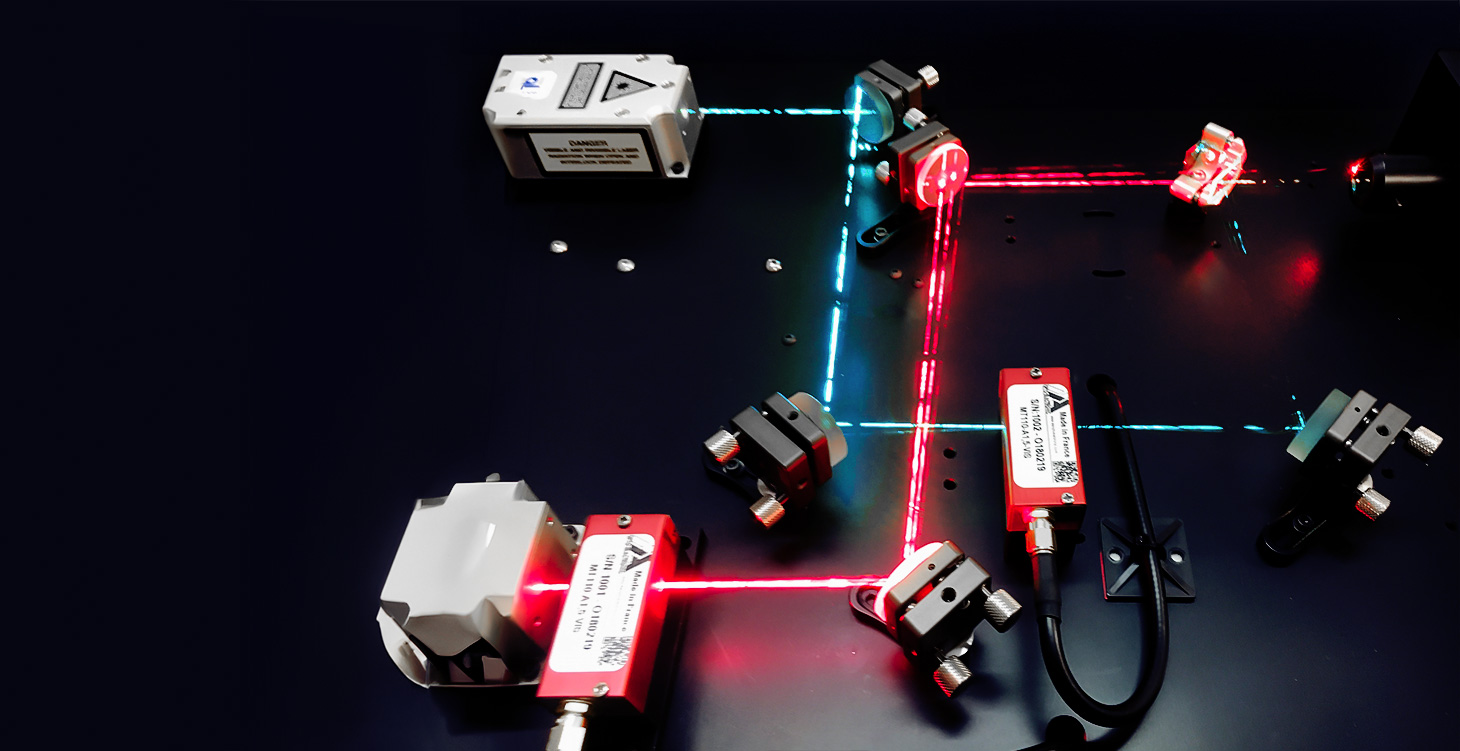Quantum computing
Exploring Light Manipulation with Acousto Optics Acousto Optics (AO) in quantum computing are used to manipulate the properties of light such as its frequency, its intensity, its phase or even its position. These properties have been well exploited in various experiments involving entangled photons: the latest Nobel Physics prize 2022 has been awarded to such experiments where AO devices were…
Quantum communication
Quantum Communication: Harnessing AOMs for Secure Transmission Quantum communication relies on the transmission of quantum states between distant locations. AOMs are used to modulate the characteristics of photons, enabling the creation of entangled states or encoding quantum information onto photons for transmission through optical fibers. This modulation ensures the faithful transmission of quantum states, which is essential for applications like…
Quantum sensing & metrology
The role of acousto-optical devices in quantum sensing and metrology Acousto-optic devices play a role in quantum sensing and metrology by enhancing the precision of measurements. By modulating the phase or frequency of laser beams used in interferometry setups, AOMs enable high-resolution measurements of physical quantities such as distance, time, and magnetic fields. These advancements have applications in gravitational wave…
Material Processing
Enhancing precision in engraving systems: the role of ultra short pulse lasers and AO devices The use of ultra short pulse lasers whose duration is in the picoseconds or even femtosecond range, is quite common in engraving systems. Since the duration of the energy is also short, this limits the among of heat on the workpiece and hence perform precise…
LiDAR
The versatility of LiDAR technology LiDAR is an acronym derived from radar but uses light instead of radio waves. As sensing technology, it can be used to measure distances, create 3D maps and collect information on shape or characteristics of surfaces or objects. LIDAR systems are used in various sectors: autonomous vehicles, meteorology, wind turbines and the list is non-exhaustive….
Optical Tweezers
Optical tweezers: a tool for microscopic manipulation An optical tweezer is a scientific instrument that uses a focused laser beam to provide an attractive or repulsive force on microscopic particles. The focused beam in the tweezers creates optical traps such that the tiny particles can be held, moved and easily manipulated. AO devices have got a large contribution in this…
Hyperspectral imaging
Unlocking insights: the role of aotfs in hyperspectral imaging AOTFs are employed in hyperspectral imaging systems to acquire spectral information from each pixel in an image. By tuning the AOTF, different wavelengths of light can be selectively transmitted, allowing the generation of hyperspectral images with spatial and spectral information. Hyperspectral imaging has applications in remote sensing, environmental monitoring, agricultural inspection,…
Lightsheet microscopy
Illuminating biology: lightsheet microscopy unveiled Lightsheet microscopy is an advanced imaging technique used in the field of biology and biomedical research. It is particularly well suited for capturing 3D images of biological samples, including living cells and tissues with minimal photodamage and high spatial and temporal resolution. Light sheet microscopy works on the principle of illuminating a thin sheet light…
Confocal microscopy
Confocal microscopy: visualizing 3D structures Confocal microscopy is an imaging technique which is used in various field including medical, biology and material science. It is valuable for visualizing complex 3D structures and dynamic processes within the samples. The principle of operation is based on the selective focusing on a specific plane of interest while eliminating out of focus light from…
